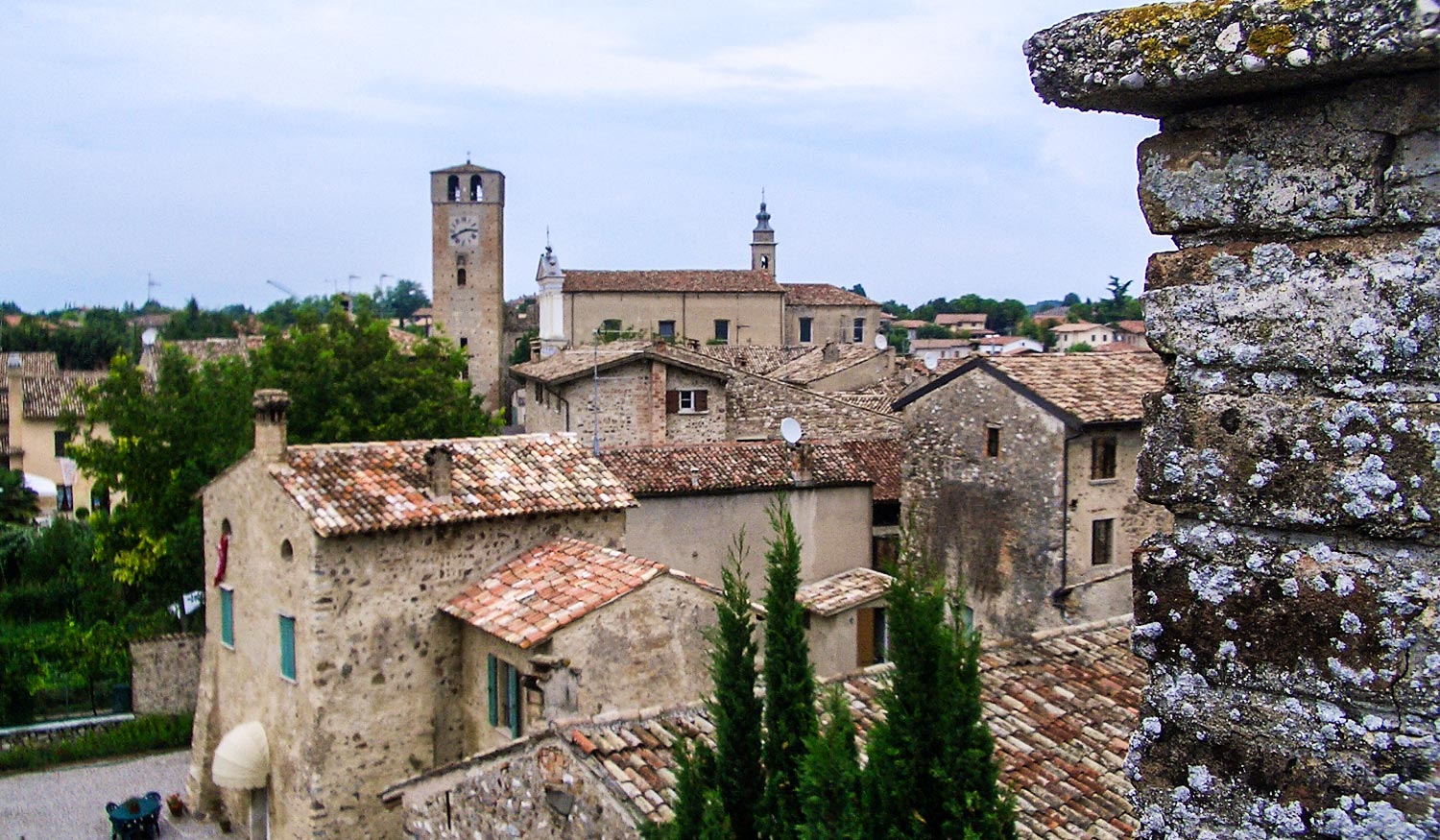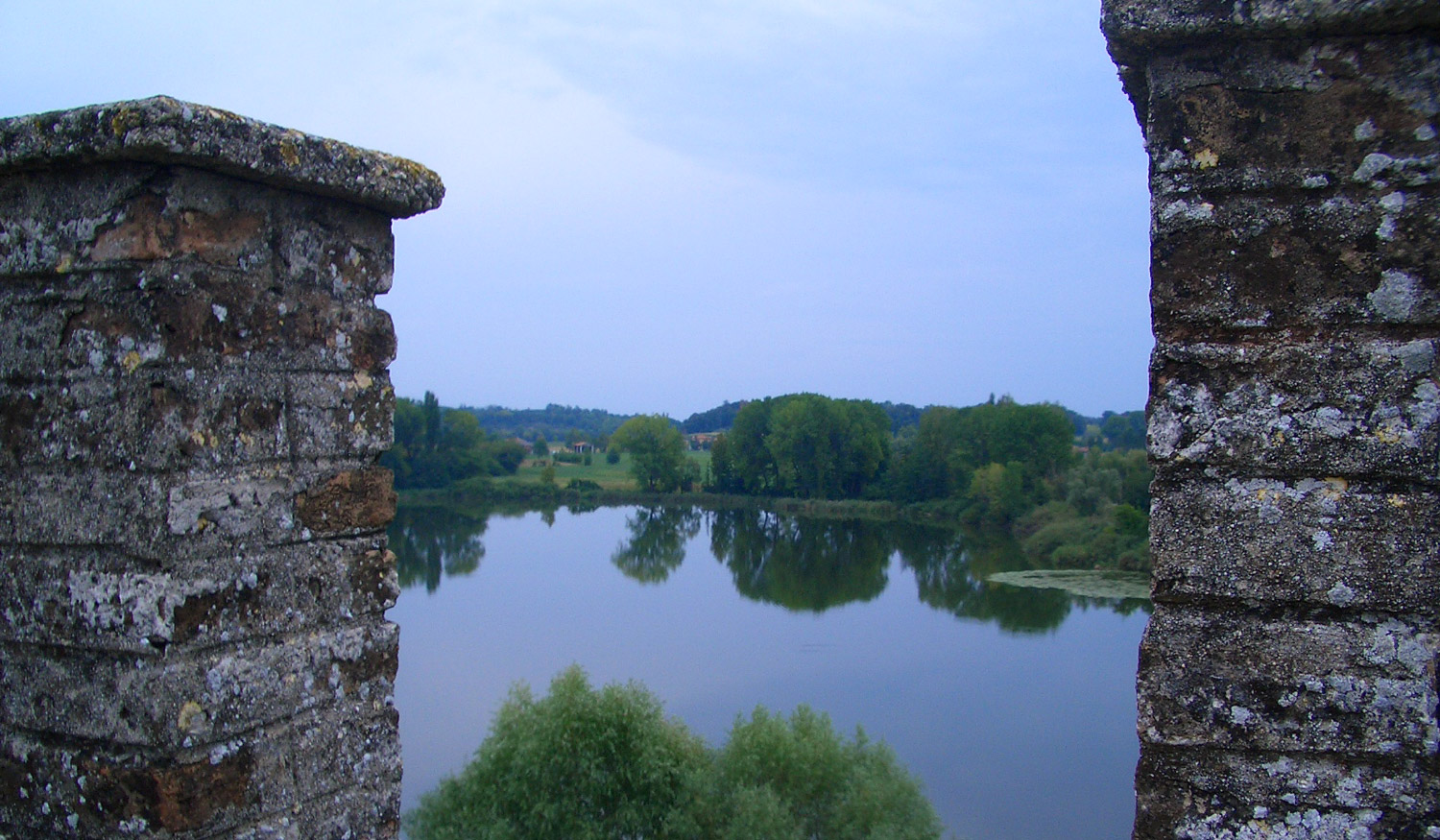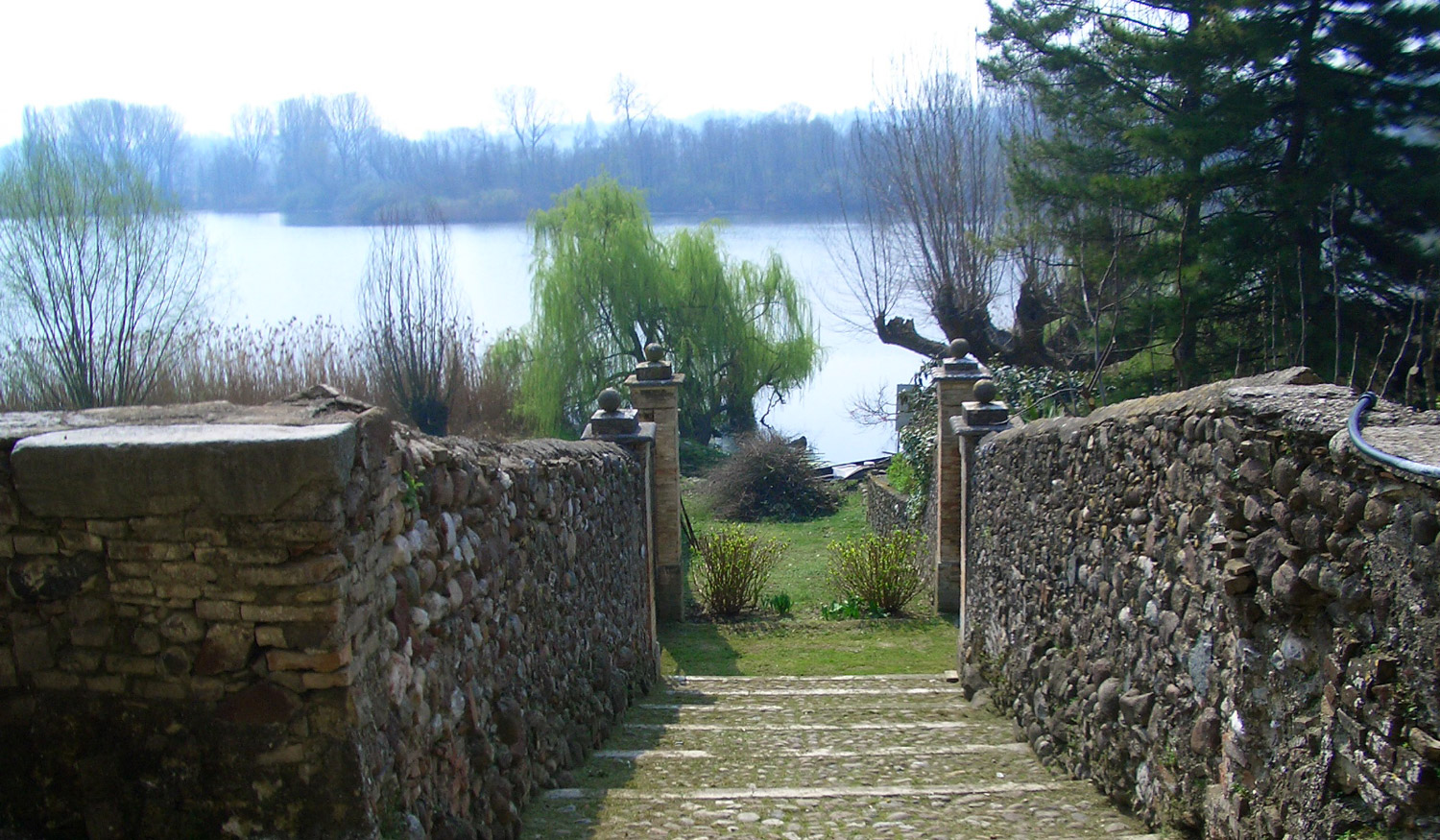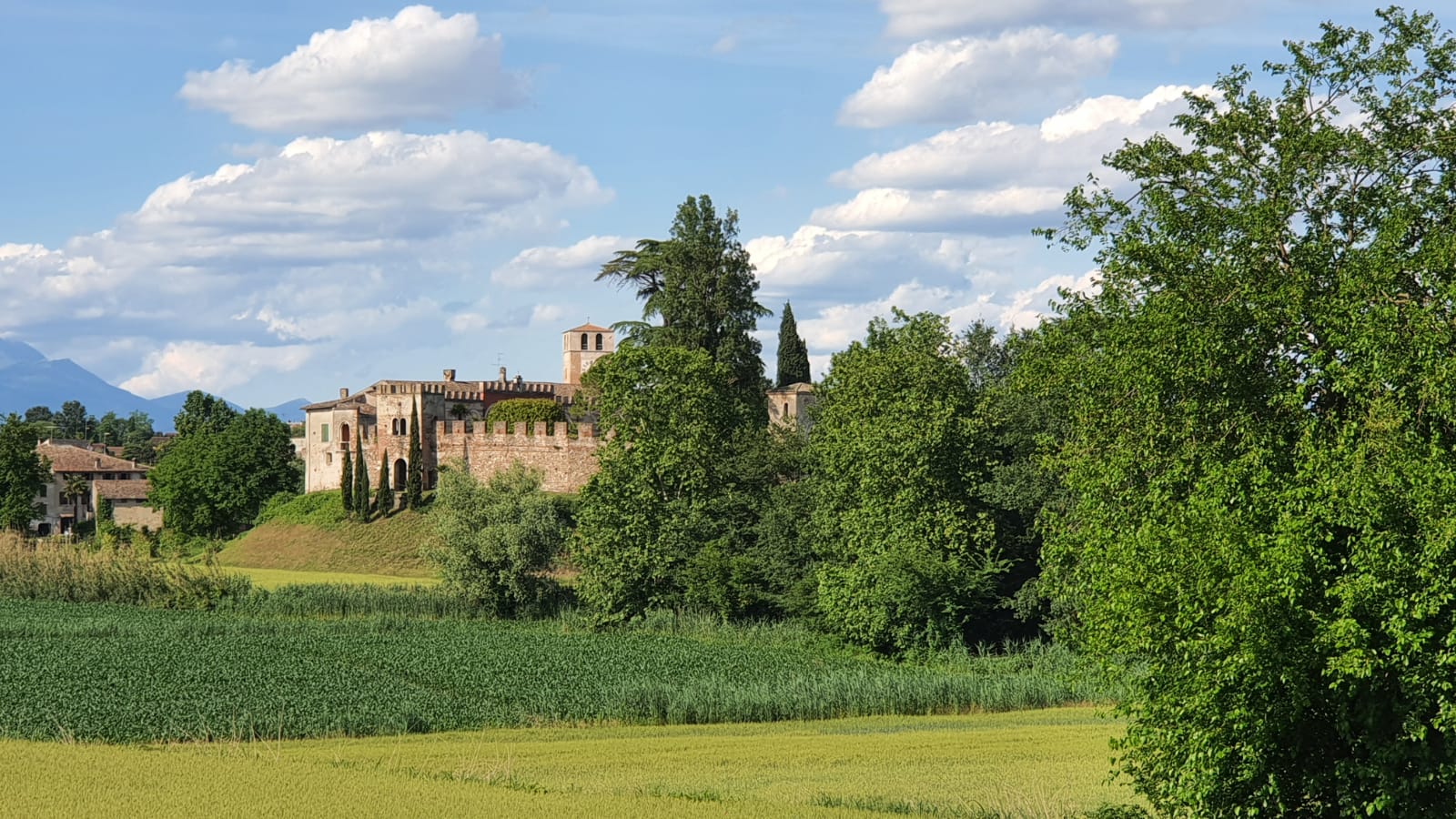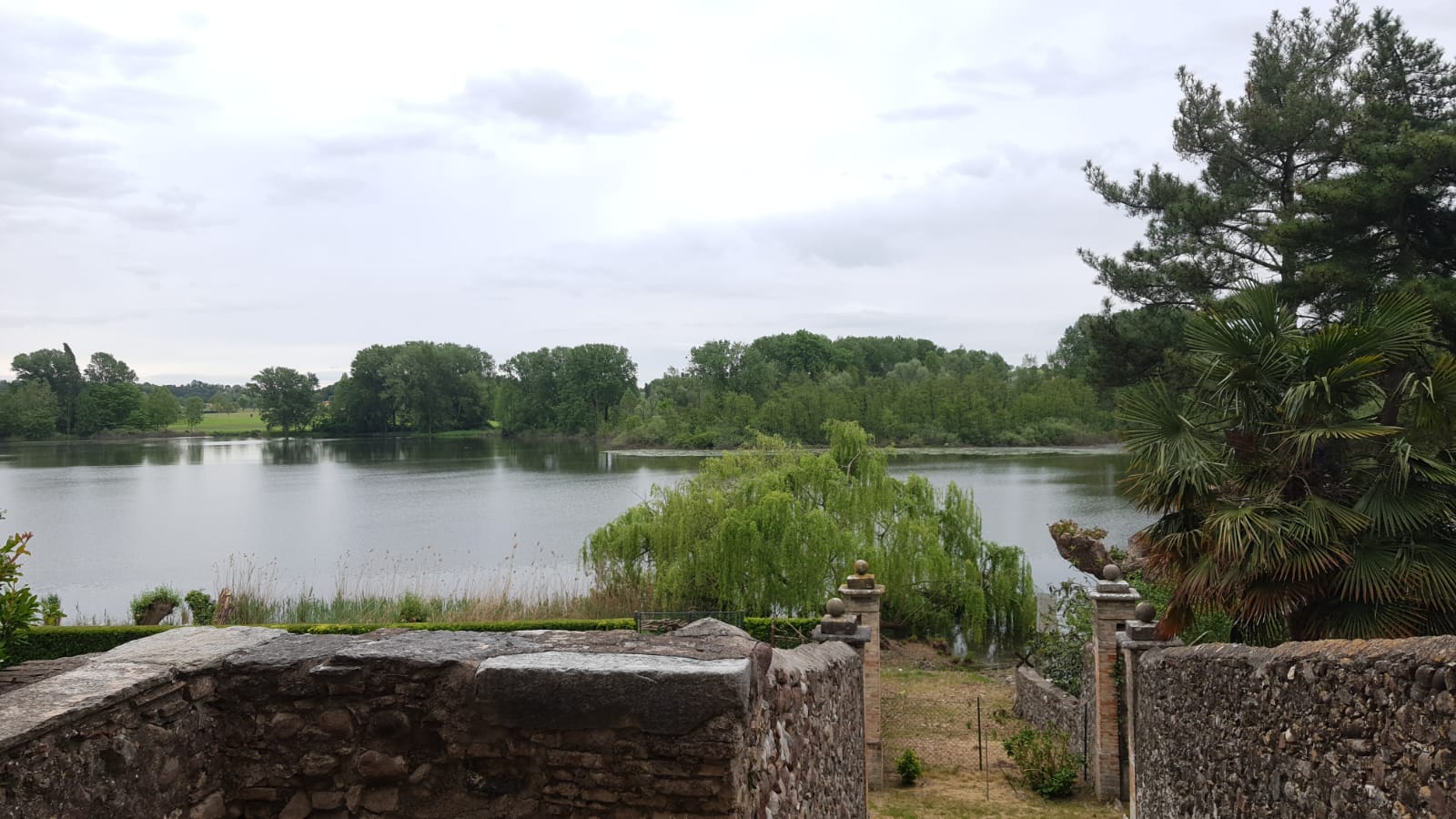Castellaro Lagusello
Those who arrive here, in just fifteen minutes leaving behind the Milan-Venice autostrada and the frantic mass tourism of Lake Garda, enter a whole other dimension, peaceful and bucolic.
One is immersed in a Virgilian atmosphere, where the sight of the famous canebrakes (nearby there is a place that disputes with Pietole the claim for the birthplace of Virgil) finally erases the monotony of the Po valley landscape, whose houses have mostly become, according to Ceronetti, “snickering masks of stupidity set in a row.”
Not here, because the fortified village of Castellaro, which is mirrored in its heart-shaped lake, was first forgotten (thus we must give our thanks to the power of oblivion) and then – when people noticed that this corner of the Garda morainic amphitheater had miraculously escaped the plague of surveyors – it received tender loving care from the local council.
Thus the old Guelf walls, the streets paved with river stones, the exposed stone walls of the rectory and of the houses were saved: such as the house covered with climbing plants, opposite Villa Arrighi-Tacoli, which one would never tire of looking at, because it has remained intact since the 13th century.
But let us proceed with order. One enters the small village from the north through a wide gate, which until the 1700s also had a drawbridge.
A tall square tower, called the Clock Tower, rises above the gate to protect it.
Mantova
Artists -like Pisanello, Mantegna, Tiziano, Cima da Conegliano, Rubens, Leon Battista Alberti and Giulio Romano- worked here impressing the history of art.
The visit to the treasure of ducal Palace and diocesan museum is the most important appointement.
As Tasso wrote in 1586
“ This is a beautiful city and worthy of walking for 1000 miles to be visited”.
Mantova is 32 km from the b&b.
Sirmione
Sirmione, on the southern shore of Lake Garda, immediately strikes the eye with its characteristic historical center that features artistic beauties of inestimable cultural value, panoramic views of extraordinary beauty and numerous religious buildings of great historical value.
With a walk through the historic center you can immerse yourself in the charm of the peninsula of Sirmione, including natural landscapes and views of the ancient village overlooking Lake Garda. Explore the precious sacred buildings and the many local monuments, from the Roman ruins of the Grotte di Catullo to the early medieval remains such as the Church of San Salvatore, from the Scaligero Castle to Palazzo Callas, in a lively annual calendar of cultural events, music, poetry and photography.
Verona
Situato a soli 30 minuti dall’Arena di Verona, il nostro B&B offre la tranquillità di un borgo medievale e la comodità di raggiungere Verona e tante località del lago di Garda.
